Inventory and identification of relief marks on bricks
Inventory and identification of relief marks on bricks constituting the building material of the church.
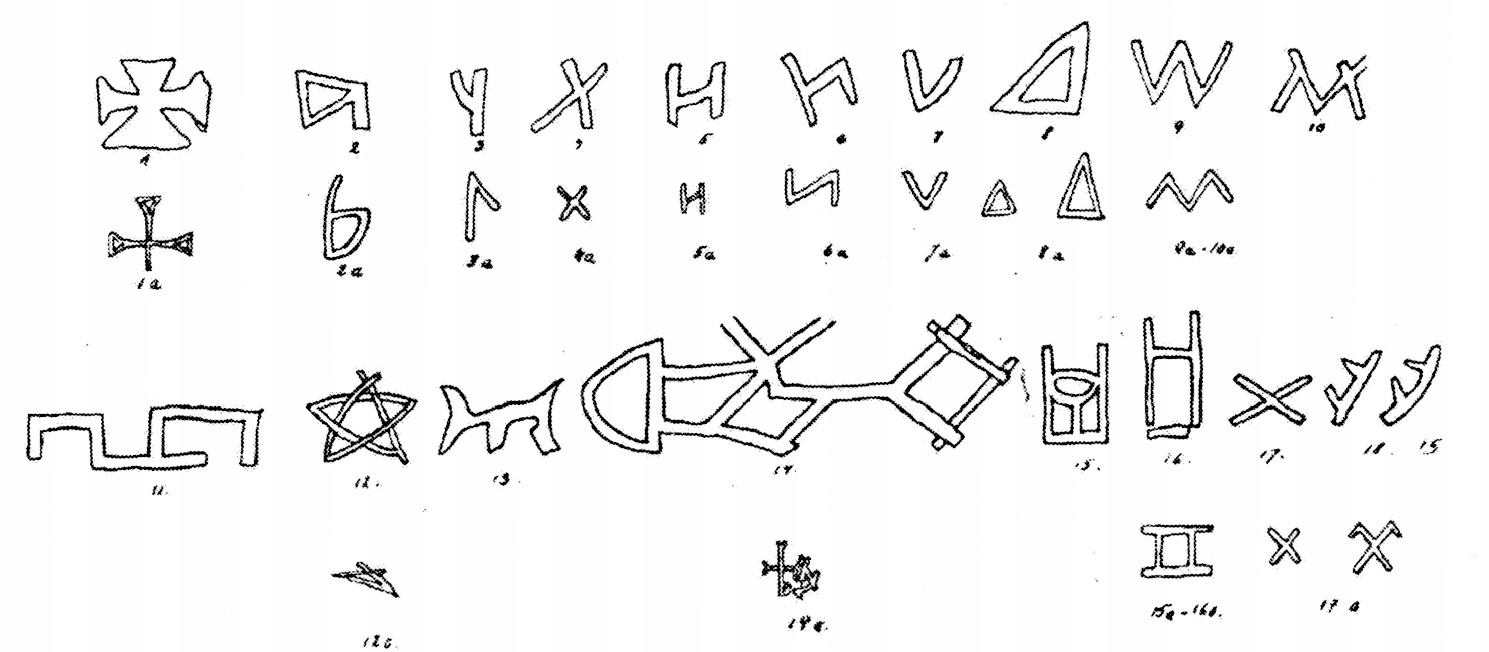
Signs inventoried until 1936 by Marian Walicki and Józef Jodkowski.
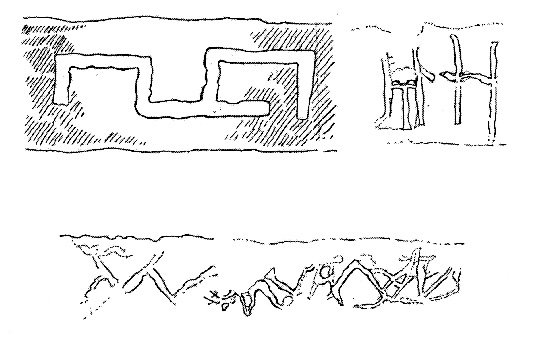
Marks identified on bricks in the church structure of the church (external walls, internal walls of the church, internal pillars and tunnels - bypasses of the prothesis and deaconone) during the inventory carried out in 2016.
The construction of the church was used in the twelfth century brick burnt from red clay, mixed red and yellow and yellow (probably the local). There were significant irregularities in the shape of individual bricks. High-temperature roasted bricks, high hardness and durability, flat, rectangular, measuring 25 - 29.5 x 16 - 17.5 x 3.2 - 4.5 cm. The signs are placed on a few bricks, on one side - a wagon-side.
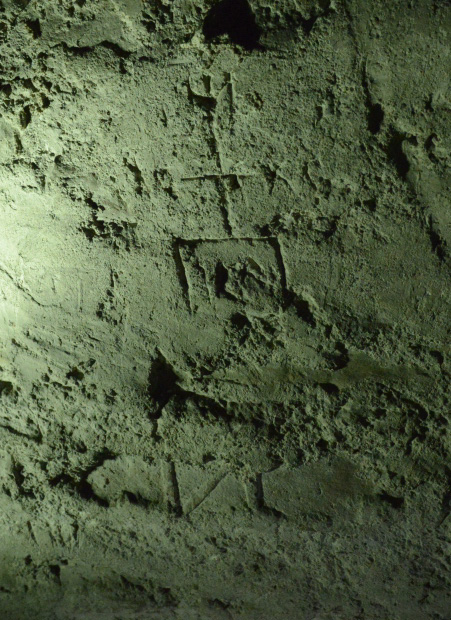
Gmerk on the original plaster coating - so-called Golgotha: A cross on a platform, described with ICC XC (Jesus Christ) NИКА (the winner) and АА (Adam's grave) at the base. Bypassing the diaconone.
A stamp on a brick, 12th century.
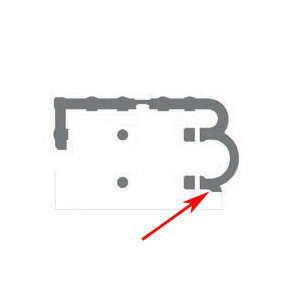
Signs on the brick, twelfth century. Bypass of the deacon.

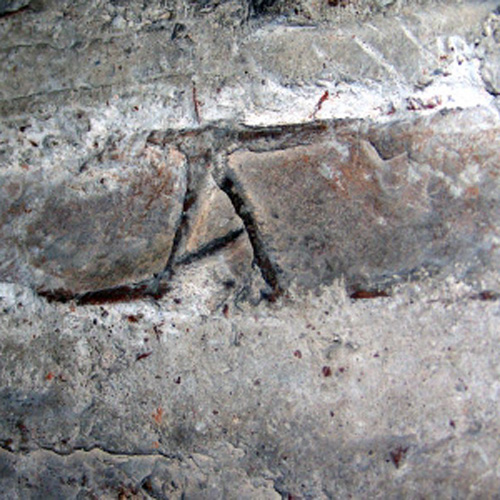
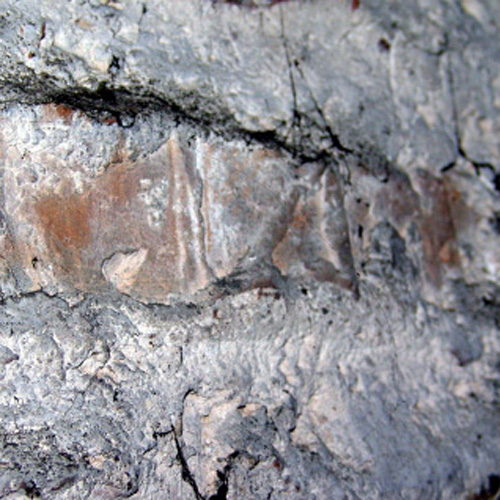
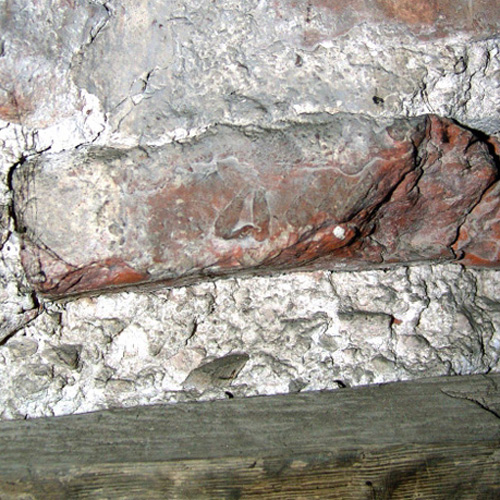
Signs on the brick, XII century. East massif of the church, external walls.
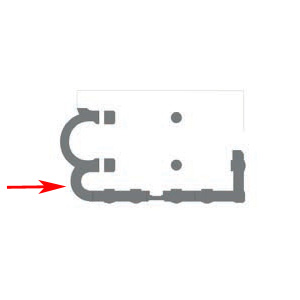
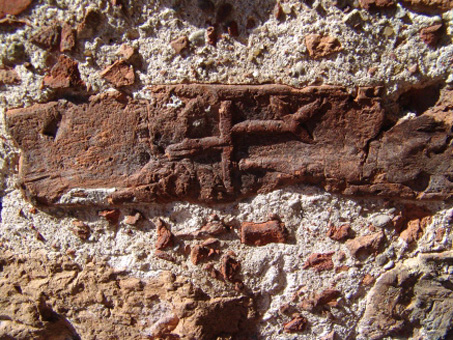
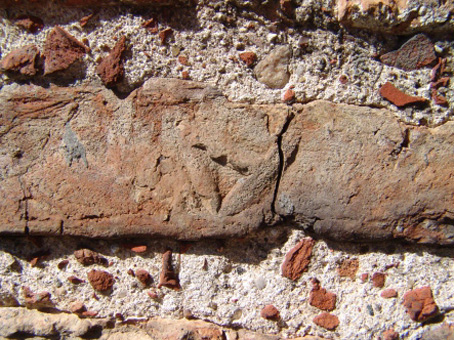
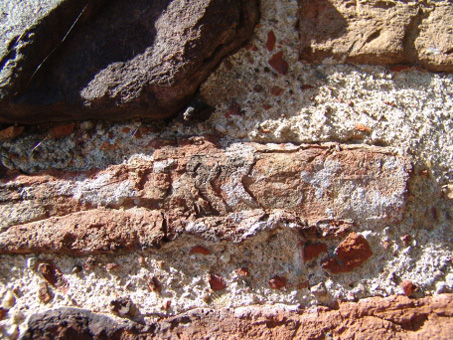
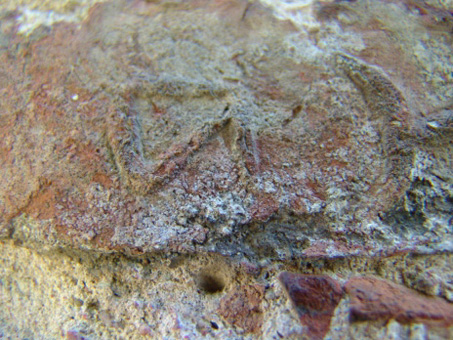
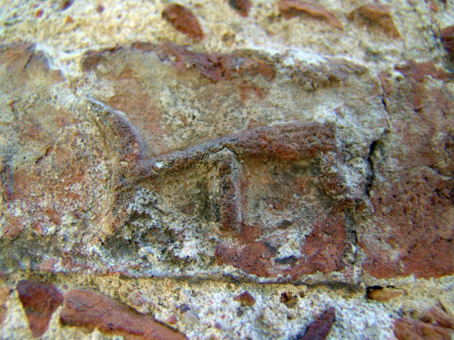
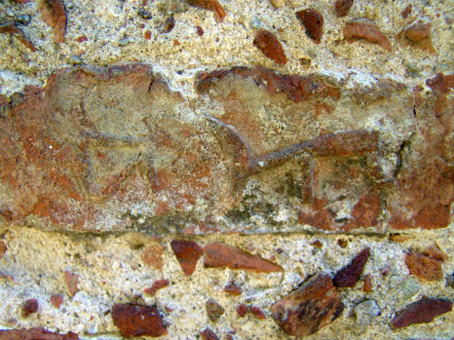
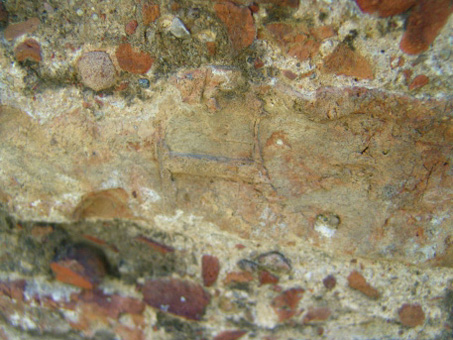
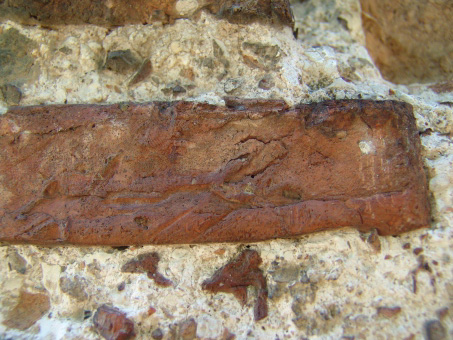
Signs on the brick, XII century. The northern massif of the church, external walls.
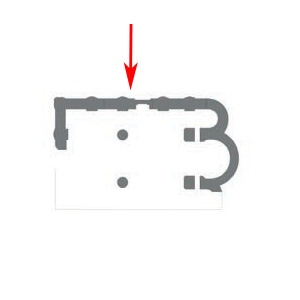
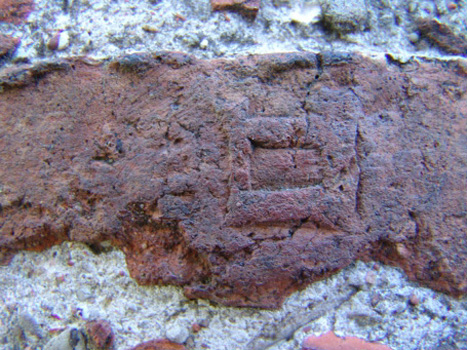
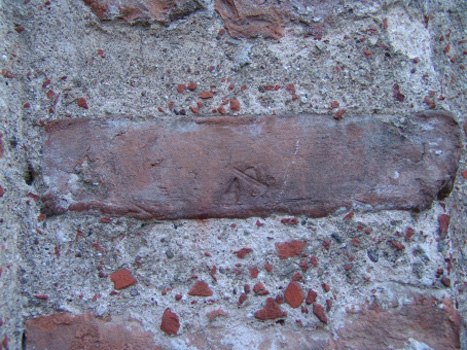
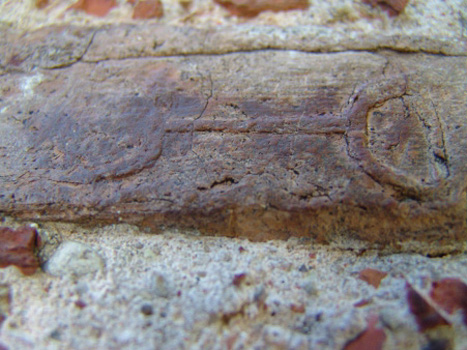
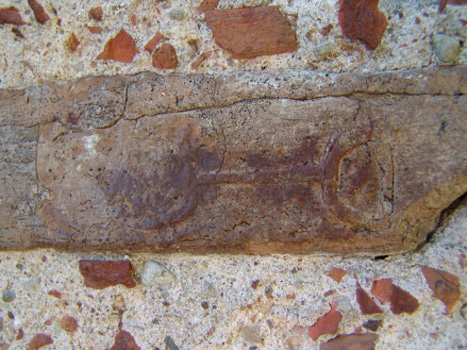
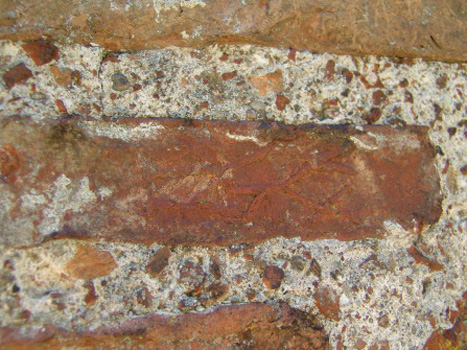
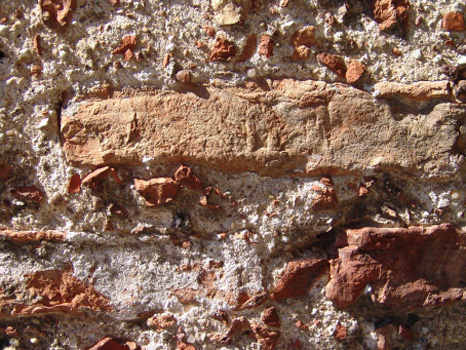
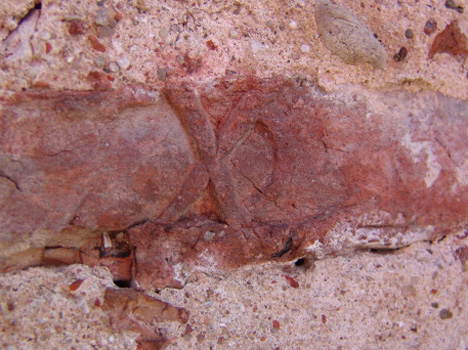
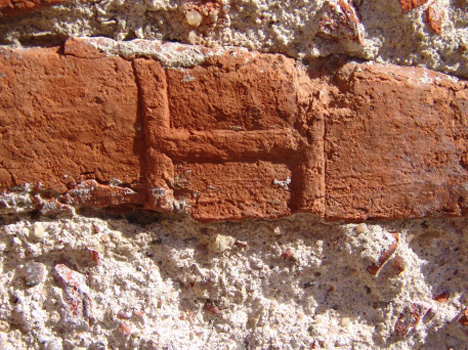
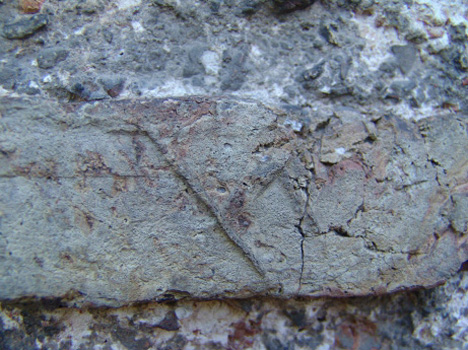
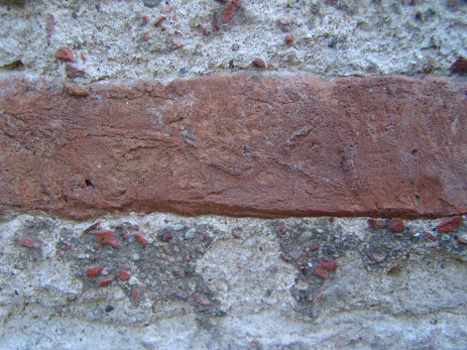
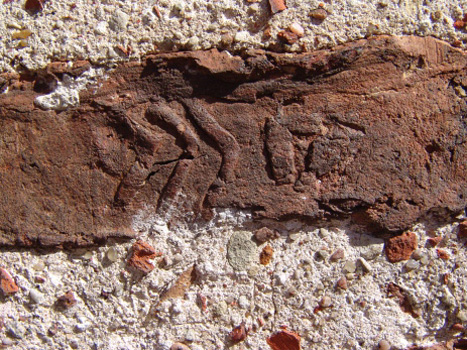
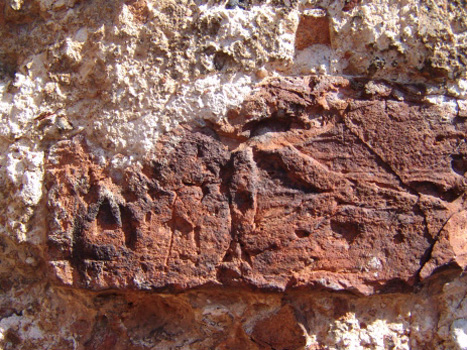
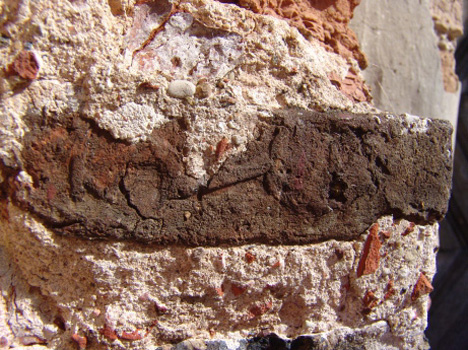
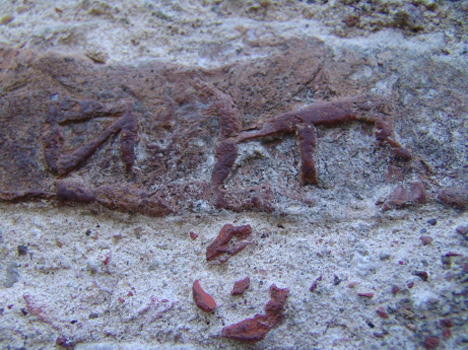
Thermovision studies
The structure of the 12th century walls of the church was tested in order to check the suitability of the method for their chronological stratification. A sequence of registration of walls and details inside and outside the temple was made. Under the conditions in which the measurements were carried out, it proved to be useful in a limited range, not allowing the indication of larger seals and the type of their binding to the original structure. In view of the large wall thickness, inhomogeneities (applications from stone and majolica) and the occurrence of tunnels in its thickness, it would be appropriate to repeat the measurements in conditions of significant temperature difference inside and outside the temple (winter).
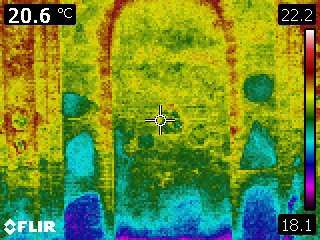
On the thermovision photo bricked up, the 12th century entrance portal in the north elevation. Measurement outside the building (winter).
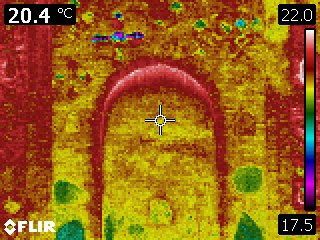
On the thermovision photo bricked up, the 12th century entrance portal in the north elevation. Measurement outside the building (winter).
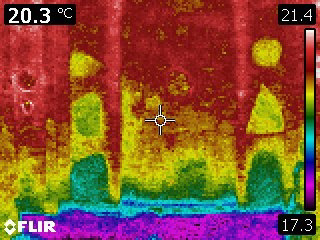
On the thermovision photo bricked up, the 12th century entrance portal in the north elevation. Measurement outside the building (winter).

